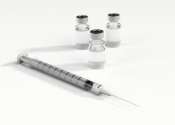Atopic dermatitis: Viruses discovered as new therapy option
Up to 15% of children and 5% of adults are affected by the chronic inflammatory skin disease atopic dermatitis. Despite advanced therapy measures, the severe itching and eczema, especially on the elbows or knees, cause great ...
Sep 29, 2023
1
30







